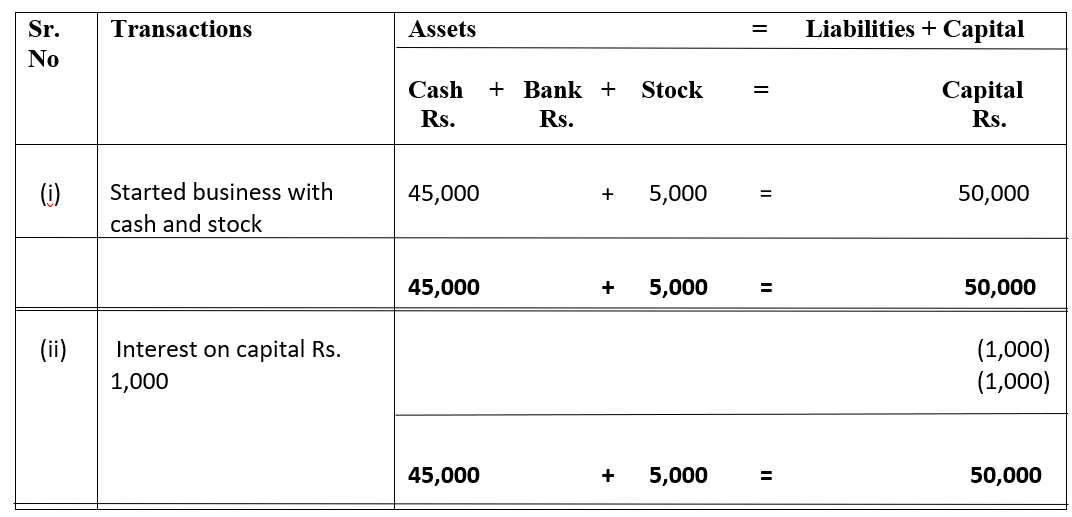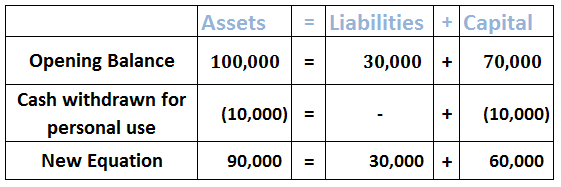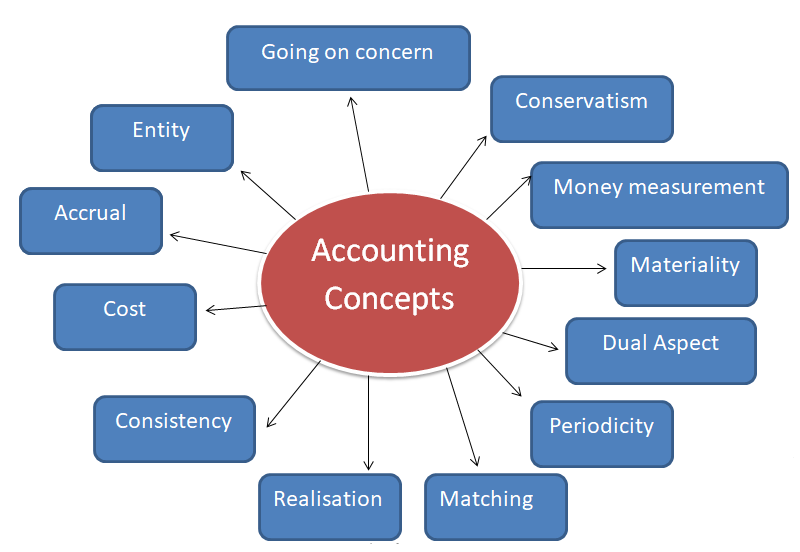I mean to ask is it real, nominal, or personal and why?
The accounting equation represents the relationship between assets, capital, and liabilities of a business. It follows the concept of the double-entry bookkeeping system where every debit has an equal credit. The rules state that at any time a business’ assets should equal liabilities. This is alsoRead more
The accounting equation represents the relationship between assets, capital, and liabilities of a business. It follows the concept of the double-entry bookkeeping system where every debit has an equal credit. The rules state that at any time a business’ assets should equal liabilities. This is also known as the statement of financial position equation.
The accounting equation can be shown as follows:
Assets = Capital + Liabilities
For example, Liza starts a business by investing $3,000 as cash. In accounting terms, business and owner are separate and so business owes money to Liza as capital.
In this example,
Capital invested = $3,000
Cash (Asset) = $3,000
If Liza puts this into the accounting equation, it will be shown as:
| Assets = | Capital + Liabilities |
| $3,000 (Cash) = | $3,000 + Liabilities |
Further, Liza purchases a market stall from Ben and the cost of the stall was $1,800. She purchases flowers from the wholesale market at a cost of $700. Now she is left with $500 cash out of the original $3,000.
The state of her business has now changed and can be shown as follows:
| Assets = | Capital + Liabilities |
| Stall $1,800 | $3,000 + Liabilities |
| Flowers $700 | |
| Cash $500 | |
| $3,000 | $3,000 |






The correct option is option A. Journal is the book of original entry. It is from the journal, the postings in the ledgers are made. As it is the journal first to record the transactions, it is called the book of original entry. It is from the journal, the postings in the ledgers are made. Ledgers aRead more
The correct option is option A.
Journal is the book of original entry. It is from the journal, the postings in the ledgers are made. As it is the journal first to record the transactions, it is called the book of original entry.
It is from the journal, the postings in the ledgers are made. Ledgers are called the books of principal book of entry.
Option B Duplicate is wrong as there is no such thing as the book of duplicate entry in financial accounting. Journal entries are the first-hand record of business transactions. Hence, it cannot be the book of duplicate entries.
Option C Personal is wrong. This classification of ‘personal’ is a type of account as per traditional rules of accounting, not books of accounts
Option D Nominal is wrong. It is also a type of account as per the traditional rules of accounting.
See less